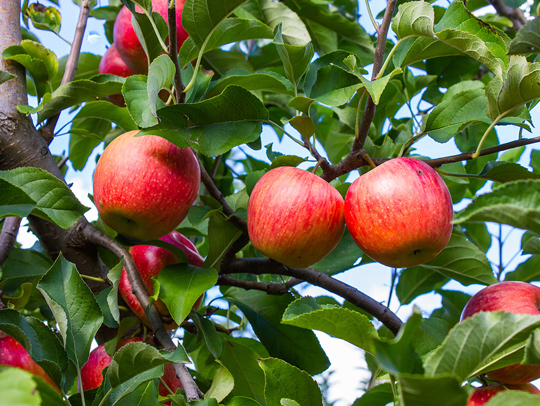Apple Breeding Program Takes Root Across the Country
August 13, 2020 | 1 min to read

Move over Johnny Appleseed! Orchards of healthier trees are taking root – and not only do these trees stay healthier when exposed to disease, but they also create the right sized tree for modern apple production across the United States.
Apple orchards today can produce about 10 times more than they did 100 years ago, thanks to researchers at the Agricultural Research Service (ARS) Plant Genetic Resources Unit in Geneva, New York, and their partners at Cornell University. While the fruits of their labor are easy to see and taste, their most impressive work is underground.
Since 1969, researchers have been developing and improving new root systems, called rootstocks. Producers graft the apple tree of their choice to these rootstocks to create apple trees that are immune to certain diseases and insects, are the right size for their orchard, and are more productive than older rootstocks. In the lab, their rootstocks have quirky names like 75O3R5-214; commercially, it’s called G.214, where “G” stands for Geneva, a registered trademark representing a series of disease-resistant apple rootstocks.
To read the rest of the story, please go to: USDA
